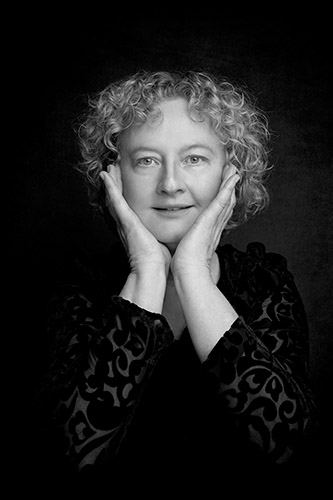Boston Camerata opens Music Before 1800 season with memorable American program

“Early music” is a relative term, especially when it comes to America’s musical history. The foundations of classical music are rooted in Europe, and once European colonization of North America began, the era 00now thought of as “early” was nearly over. A truly American classical music, indeed all non-indigenous American music, began later.
That is to place the season-opening concert of Music Before 1800 in perspective, because the music was American, and from after 1800. The program, performed at Corpus Christi Church, was a special one from the Boston Camerata: “We’ll Be There: American Spirituals, Black and White, 1800-1900.” As Camerata director, soprano Anne Azéma, explained to the audience, this was a roots music concert, and it was wonderful.
Azéma was part of an eight-voice choir, accompanied at times by a quartet of instrumentalists, that sang a continuous set of spirituals lasting a little over an hour. The program traversed the 19th century and was arranged to follow a narrative of suffering, endurance, deliverance, and the final promise of the afterlife. This was spiritual music given charismatic performances in the precise double meaning of that term—compelling and full of a spirit above and beyond that passed through the singers.
In this music, that spirit was the strength needed to endure and preserver through the worst hardships, the absolute story of the origins of a black American music. The subtle and effective touch of the arrangements was to mostly feature a solo voice or small group, then have the remaining voices respond; at other times a spiritual was followed by the whole choir singing with that scintillating timbre that comes from shape note music.
Every singer had a turn, most going to the wonderful tenor Jordan Weatherston Pitts. His lower range was strong and his higher was floaty and keening, and his phasing and sense of drama were superb. He sang with great energy that seemed to pass through his body and explode through his voice, and also purpose, serious about delivering the meaning of the music, which also meant being serious about the joy and pleasure in so much of it.
The overall tone was established in a substantial early section titled “Mixture of Joy and Sorrow.” One of the spirituals had that exact title, others included “Weeping Mary” and “Let us cheer the weary traveler.” More than the titles, the music showed how the roots idea worked, with the same spiritual subject sung with different styles and themes, depending on the source. Almost everything on the program had no named composer but was instead sourced to various hymnbooks and collections. Within that group some had music while others just the words, compiled with the expectation that the tunes would be passed down orally from generation to generation. That was the story of music globally for eons, and essential to the survival of black music traditions under slavery.
And so a medley of “Something New,” “My soul wants something that’s new,” and another “Something New” came at the same text in songbooks from different places—The Revivalist, Religious folk songs of the American negro, and The Social Harp—and with different ideas about harmony and phrasing. Heard in sequence, these three versions also sounded like three sections of the same extended song made by a group of composers. One heard written and oral traditions fuse to make the same music and share the same values. That was the sound of the roots growing.
This was beautiful and vibrant to hear and also exciting and revealing. That black American music is essential to American pop music is obvious, but so is it essential to American classical music, via the Protestant hymn music that was in the ears of composers who were also thinking about Brahms, or dance tunes, like Ives and Joplin. This is something one almost never hears examined in the context of classical music, and it was moving and exciting to witness it come alive.
The backing quartet of guitar (program creator Joel Cohen), organ, fiddle, and bass—provided lively and sensitive support, as required.
Another marvelous example of hearing the roots grow in real time was through two versions of “Sinner Man” (made famous by Nina Simone) sandwiched around the instrumental “Joe Cooley’s,” an Irish reel that has the same melody and that, like the spiritual, was passed down or orally. Which came first? That matters not at all, as they both are part of American music, talking to each other and to us through generations. And that’s the ultimate answer to how old early music is; music is only as old as the last time it was played.
Vox Luminis performs at Corpus Christi Church, 4 p.m. October 23. mb1800.org
Posted Oct 20, 2022 at 12:53 pm by Kate Frank
This review is subtle, illuminating, and so enticing. I am a long-time fan of the Boston Camerata and have only attended virtual performances duing these Covid years. I miss live music and the concert you describe would have spoken to my soul. I could not attend the open rehearsal for this concert in Boston and I am unable to go to the live performance in New York. My great loss!
Anne Azema is a genius not only as a soloist but as a conceiver of programs with depth & relevance:old music for modern times!!